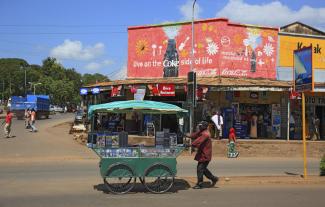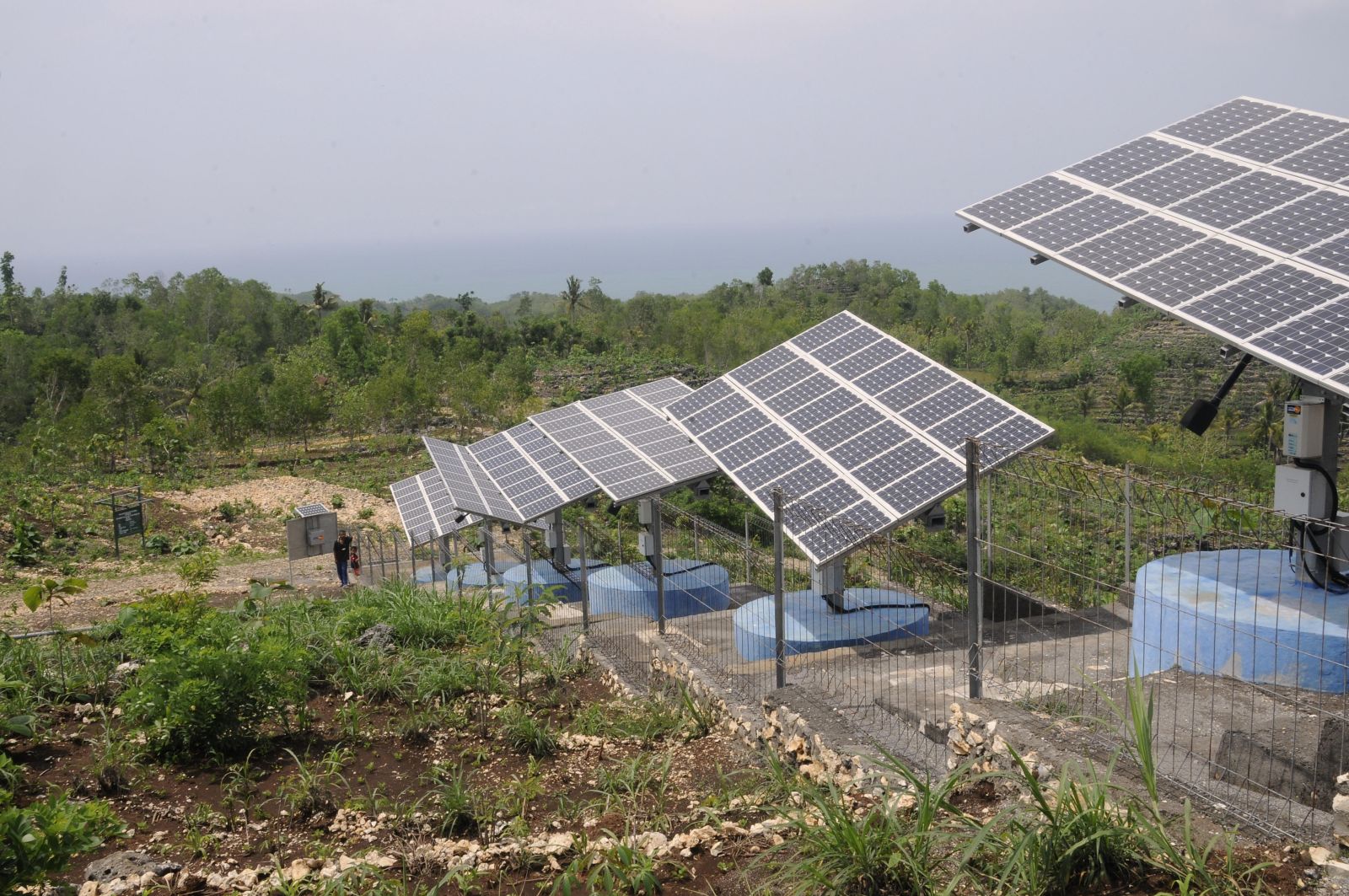Failed policies
Descent into hell

The story begins in the 1970s. Oil prices were high after the oil shocks of 1973 and 1979, and oil-exporting countries deposited substantial revenues in western private banks. Lethargic western economies, however, could not absorb the “petrodollars”, so banks encouraged developing countries to borrow. African governments bit the hook. The opportunity looked good and they had to finance development. Given that prices of the commodities that African countries exported were solid, debt burden seemed bearable.
In the 1980s, commodity prices fell, however. At the same time, interest rates and the dollar exchange rate increased. This was the worst-case scenario. The external debt became a huge burden on many countries. Their balance of payments started to deteriorate. As they became less and less able to service their debts, they had to turn to the IFIs for emergency loans and rescheduling of loans.
According to the IFI’s division of labour, the IMF deals with the short term, macroeconomic stabilisation. Typically it insists on two things:
- budgetary measures to “clean up” public finances by reducing government spending (cutting subsidies, reducing
- public-sector employment, decreasing social expenditure et cetera) and
monetary-policy measures, including devaluation of the national currency to promote exports and higher interest rates to fight inflation.
In contrast, the World Bank’s role is to manage medium and long term development through “structural measures”. They consist of:
- unilateral trade liberalisation, in particular the reduction of tariffs and quotas that protect certain sectors, and
- the privatisation of public enterprises, which is supposed to make them more efficient.
The term “structural adjustment programmes” refers to this set of measures as demanded by the IMF and the World Bank. In the USA and the UK, similar strategies were implemented by President Ronald Reagan and Margaret Thatcher respectively. The slogan was “austerity”. Thatcher famously liked to argue “there is no alternative”, though that stance was disputed by the opposition.
African governments were cornered. Depending on funding in currencies they had no control of, they indeed had no alternative. In the hope of “consolidating” their budgets, they cut capital expenditure and social spending. The education and health sectors were affected in particular. Moreover, they exposed more of their economies to global competition.
The full impact of structural adjustment is hard to assess. The issue is controversial. Things would be different if this specific policy mix had not been implemented throughout the developing world. We have no empirical evidence of what results a different approach might have delivered. The IFIs, which always praise competition, actually enforced a monopoly on policymaking.
In lack of counter-factual evidence, the best approach to assessing the results of structural adjustment is to consider what they were supposed to deliver. The IFIs promised to liberate market forces so African countries would become competitive internationally and prosper fast. Things turned out differently. For most countries concerned, the 1980s and 1990s were descent into hell.
Stalled growth
Economic growth slowed down. It fell below the rates of previous decades. Agriculture suffered as state support was radically withdrawn. In West Africa, this sector has actually never recovered from that blow. After independence in the 1960s, industrialisation had begun encouragingly in some places, but it was now wiped out. Ill-considered trade liberalisation hurt budding industries. Because of devaluation, the imported equipment they needed became more expensive. At the same time, the costs of inputs such as electric power, fuel, water et cetera rose, as governments reduced their expenditure.
In 1980, seven African countries had had a per-capita manufacturing output that was comparable to that of Thailand. With the exception of Mauritius, all of them were lagging far behind Thailand two decades later. The UN Conference on Trade and Development (UNCTAD) made this comparison in a report in 2005. Its conclusion was that structural adjustment had “failed to restore an economic climate conducive to investment and employment”. The UN Children’s Fund (UNICEF) had issued a warning call in 1987, pleading for an “adjustment with a human face” (Cornia et al. 1987).
The impact was worst in social dimensions. After independence, schools served more or less as a social elevator. Due to structural adjustment, the quality of public education deteriorated significantly. That was true from primary schools to universities. Access to education became more unequal, with poor people becoming ever more marginalised. Instead of expanding the health infrastructure, which basically served urban areas, into the rural hinterland, governments reduced spending on public health, compounding problems of inequality. The rich can afford expensive private clinics or go abroad for treatment, but the poor must depend on informal medicine or decaying public health facilities.
It bears repetition that the Ebola crisis in Guinea, Liberia and Sierra Leone would have been less deadly, had these West African countries had a proper health infrastructure. In lack thereof, they witnessed the fast spread of the disease, which, according to the World Health Organization’s conservative estimates, killed some 11,000 persons. Structural adjustment is partially to blame, though civil wars certainly compounded the problems.
Instead of making economies grow fast, the structural adjustment policy actually had a contractive impact. Fast growing populations made matters worse. Formal employment was in ever shorter supply. Impoverished peasants looked for livelihoods in the cities. Factory workers lost jobs. Housewives wanted to earn money to supplement the dwindling incomes of households’ main breadwinners, and so did youngsters who dropped out of school. Ever more families could no longer afford school fees or educational materials. Cohorts of young girls in disadvantaged neighbourhoods resorted to prostitution to earn the money they needed for eating once a day or obtaining sanitary napkins.
Poverty, lawlessness and exploitation added up to a fertile ground for corruption. With stagnant incomes, public sector employees – regardless of their rank – were tempted to make ends meet with ethically reprehensible practices. Police officers took bribes from motorists. Bureaucrats demanded money for services that are supposed to be free, such as issuing IDs. Teachers and professors cheated at exams and charged high sums for private lessons.
Downward spiral
It is particularly depressing that all this suffering led to nothing. Structural adjustment had the tendency of worsening the financial issues that it was supposed to resolve.
According to the Committee for the Cancellation of Third World Debt, the debt repayments from the Global South to the Global North between 1980 and 2000 amounted to the equivalent of 52 Marshall Plans. These massive sums were basically wasted on a downward spiral of ever more debt being restructured ever more often.
In view of this vicious cycle, a global movement emerged, demanding the cancellation of debt. By the end of the 1990s, the established economic powers of the G8 finally admitted that structural adjustment had failed. Its Cologne summit initiated multilateral debt relief in 1999 by launching the Heavily Indebted Poor Countries (HIPC) initiative (see box).
In the early 2000s, economic growth returned to Africa. The driving forces were:
- relative political calm instead of strife,
- rising commodity prices and
- debt relief.
Though growth was quite vigorous, it only generated few formal-sector jobs. It was not propelled by manufacturing or higher productivity in agriculture. Therefore, masses of people still depend on the informal sector which is marked by low pay, no social protection and permanent insecurity (see my essay in D+C/E+Z e-Paper 2017/10, p. 24).
The sad truth is that Africa has been experiencing jobless growth. It is striking, moreover, that average growth rates of about five percent in the millennium’s first decade equalled the share of GDP that was transferred abroad (repatriated profits, interest on loans and expat incomes). Africans are definitely not prospering.
Structural adjustment was a dark chapter in Africa’s postcolonial history. The IMF, however, is still the main administrator of the currencies of the most vulnerable African economies, which need its approval before borrowing money in international markets.
On the other hand, countries’ debt levels are rising fast again, while interest rates and the dollar exchange rate are set to increase. It seems that the scenario that led to the structural-adjustment concept in the first place is currently being replicated. We must hope that the lessons have been learned and the same mistakes will not be made again.
Ndongo Samba Sylla manages programmes and research at the Dakar office of the Rosa Luxemburg Foundation, which is affiliated to Germany’s Left party.
n.sylla@rosalux.sn
References
UNCTAD, 2005: Economic development in Africa. Rethinking the role of foreign direct investment. New York and Geneva: UN.
Cornia, G. A., Jolly, R., Stewart, F., 1987: Adjustment with a human face: Protecting the vulnerable and promoting growth. Oxford: Clarendon Press, 1987.
Correction, 2.11.2018: HIPC stands for “Heavily Indebted Poor Countries” rather than “Highly Indebted Poor Countries”, as was stated in a previous version. The mistake was made in the editing process. We apologise to readers and the author.












